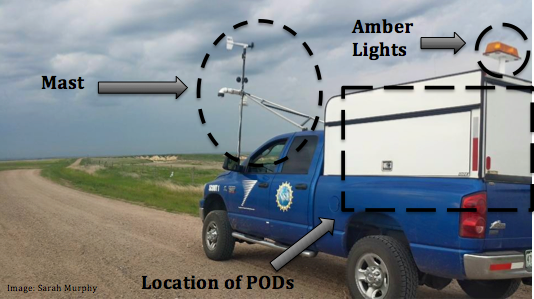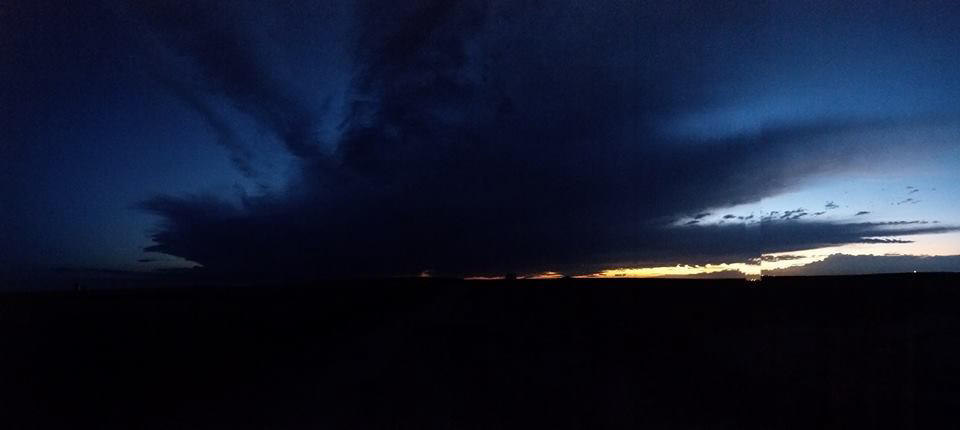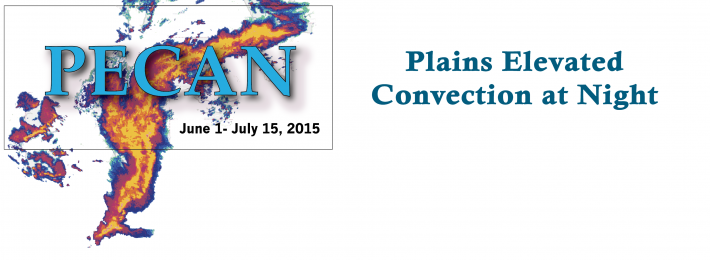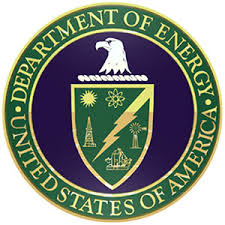Daily Mission Update: 7 June 2015
By Jacob DeFlitch
PECAN, a large meteorology field study funded by the NSF includes a wide array of vehicles to collect and observe data during missions. As a participant in PECAN* through the Center for Severe Weather Research, I am currently a driver/navigator in Scout 1, a mobile mesonet, a vehicle outfitted with instruments to record various atmospheric variables including temperature, relative humidity, and wind velocity (speed and direction.) We use these trucks to not only deploy PODs (to be discussed momentarily), but also to perform mobile transects ahead of, through, in, around and behind various storm environments. (Transects are important because they provide near-ground real-time data of rapidly-changing environmental conditions that might not otherwise be captures using remote sensing equipment.)
On the bed of the truck sits roughly four to five in-situ PODs, deployed at certain locations to collect data about the environment (temperature, relative humidity, wind velocity, pressure) over a period of time. The amber lights, as noted in the picture below, are used for safety when deploying PODs or doing transects.

Below is a timeline of the 7 June Convective Initiation (CI) mission, from my prospective in the mobile mesonet and how it came to fruition.
1500 UTC: Bill Gallus of Iowa State University debriefs on previous day's weather and model accuracy. Continues to then present the forecast for Days 1-3, discussing the probabilities for MCS, LLJ, CI, and bores. Meanwhile, members of the mobile unit teams of PECAN prepare for 7 June mission. Certain procedures that must be completed before departure in a mobile mesonet includes: Preparing the PODs (making sure they are powering up okay, their instruments are returning valid atmospheric readings, are recording data, etc.), recording specific initial conditions, and checking the fluids of the vehicle.
1600 UTC: Decision made by PI's, PECAN participants made aware the mission is a CI mission. Vehicles then receive exact deployment locations from their team coordinator.
1615 UTC: DOWs for CSWR depart Hays for south-central Kansas.
1700 UTC: CSWR mobile mesonets depart Hays for Wakeeney, KS.
1745 UTC: Arrive in WaKeenet, make a pit stop at a nearby McDonald's for a quick bite to eat (ahh, the joys of project road food!) We are then informed to leave WaKeeney for Ness City, around 1830 CDT.
1915 UTC: Arrive in Ness City, KS.

2000 UTC: CSWR Mobile Mesonets split to complete different transects. Scout 2 holds in Ness City to complete a transect from Ness City to Jetmore, KS. Meanwhile Scout 1, drives to Rozel to transect south on Pawnee Street to Kinsley, KS. Transects continue until further notice or end of IOP (~08 UTC).
As the mesonets for CSWR continued transects between the two locations, the DOWs observed various phenomena including both CI and bores. DOW6 operator Alycia Gilliland captured a storm at dusk near Friend, KS during PECAN operations, ith the corresponding radar imagery scanned.

Operations were officially declared over at 0630 UTC (0130 CDT).
In summary, the mission overall was a success. Both CI and bores were observed within the domain scanned by radars and mesonets. The radar mosaic below from the EOL Field Catalog and Mission Summary shows bores propagating both northward and southward ~540UTC near Dodge City, continuing to initiate convection (CI) as they traveled. One of the mobile mesonets also recorded an 8 mb pressure rise across the bore where convection then proceeded to initiate.
* For future reference, the following list is a helpful guide to understanding/deciphering the alphabet soup that is PECAN acronyms: CI: Convective Initiation
CSWR: Center for Severe Weather Research
DOW: Doppler on Wheels
IOP: Intensive Operations Period
LLJ: Low-Level Jet
MCS: Mesoscale Convective System
PECAN: Plains Elevated Convection at Night
PI: Principal investigator
Today's contributing student author is Jacob DeFlitch. You can follow Jacob on Twitter at @WxDeFlitch.
To download a copy of today's blog entry, click here.
Report Summary: 7 June 2015
Mission Summary Goes Here
Report by DATE
1 June 2 June 3 June 4 June 5 June
6 June 7 June 8 June 9 June 10 June
11 June 12 June 13 June 14 June
15 June 16 June 17 June 18 June
19 June 20 June 21 June 22 June
23 June 24 June 25 June 26 June
27 June 28 June 29 June 30 June
1 July 2 July 3 July 4 July 5 July




